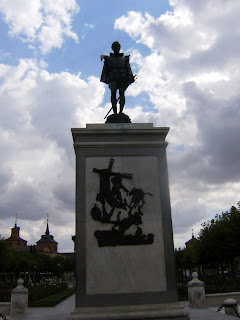
Craig and I were invited to a friend of a friend’s party and so, we actively attended a fiesta not knowing what to expect, where we did not know anybody, and, most importantly, could not speak the language. The small home was charming, with its grape arbor, bunches of raisins drying in the storage, a geranium-fringed tile porch, and the garden out back in autumn transition. It was on the outer edge of the city, and worked on a gasoline generator and non-potable water…but you would never know if someone didn’t warn you not to drink from the tap!
I was surprised when no one offered me a drink upon arrival. In the United States we use this as a social tool to take the awkward edge off party talk with strangers. Wine, for example, provides not only a conversation subject but also allows for brief pauses for thought as one swallows. But no one even gave a thought to drinks until the resident cook arrived and the food preparation began. Then, people began to break out the favorite cheap beer and mixers. A popular drink here is cerveza con límon, or beer with lemon Fanta. Most people were sipping on these and, although there were cases of liquor in the kitchen, those weren’t touched yet.
To me the most important and most interesting element of parties is and always will be the food. Unable to communicate without painful effort, I was especially drawn to the cooking, which requires no language. As with most cooking that takes place outdoors, the men were manning the ship, assembling a gigantic pan and propane burner set-up, dealing with the technical side of sticking cardboard beneath the stand to prevent wobbling. I was excited: I would be able to watch the preparation of and then sample the famous Spanish dish, homemade paella.
They heated oil in the pan and tossed in chicken pieces. I tried to count the bones; thigh chunk, ribs, wing joint. When it was mostly cooked they removed the chicken and replaced it with a mountain of very finely chopped onion and red and green bell pepper and sautéed them until the onion was translucent (just like my own momma always taught me). They added two jars of what I think was a very mild roasted tomato salsa. Slowly, the remaining ingredients were added: tightly closed clams, salt, strips of calamari, fish stock, green vegetable stock, ground saffron, three large sacks of rice, then ever so gently, langostinos, or prawns, their dark eyes glazed over, and one by one, mussels still in their wet shells.
In my experience thus far, it does not matter where in the world you are—men will always practice the same ritual while cooking outdoors. Be it a campfire, a propane stove, a barbeque, a pig in the ground, a turkey fryer, or a giant pot of jambalaya, the male chef will inevitably halt, assume a wide-legged stance, cross his arms, and stare into his meal for however long it takes for the satisfaction to set in. Craig and I came to the conclusion that this is genetically programmed into the male DNA, dating back to the dawn of humankind, when, in our hunter and gatherer societies, providing the tribe with food truly was a day’s work, or a week’s work, or more. Men truly fought for their meat and, as it slowly crackled over the first fires in our evolutionary history, they watched it with (hungry) satisfaction and pride.
In this case, we were all hypnotized by the bubbling concoction before us, by the smell of cooking food in the cold air, by the aesthetics of it, the yellow broth so bright against the dark black of the mussels, the warmth powerful in the weather. Our chef finally shook off his trance, realizing that more needed to be done. He lit a cigarette and distributed pages of newspaper to his onlookers and we each ceremoniously lay our sheet on top of the first, covering the pan to steam the contents. With the food covered, people wandered away, refilling their glasses, changing the music, making idle conversation. I found myself attracted to the baby in residence, the only other person besides Craig in linguistic isolation. Soon, plastic plates were handed out, loaves of crusty bread were set on various tables and finally—the newspaper was removed.
The dish was breathtaking. Bright yellow rice, seemingly decorated by the meats and shells, dressed with lemon slices. And the taste? Magnificent. What a beautiful balance between fluffy, tasty rice, and food you have to fight for—shrimp to peel, mussels and clams to pull from the shell, chicken meat to coax off the bone. I had to stop myself after two plates (though I felt like I could have eaten it all night long) and it left me with a content stomach and brightly dyed fingernails.

I give homemade paella five stars.
We caught a ride home with a man that had to put his baby to bed. We had been there five hours. “You’re going to miss the party,” our friend told us as we left, “It’s still early. La fiesta hasn’t started yet.”











